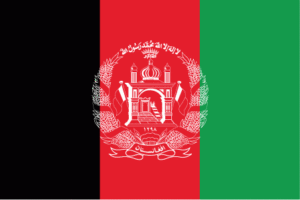
Region: Asia
Disability Definition
In Afghanistan, a person is deemed disabled if they experience any form of constraint due to an impairment. This definition is based on the common understanding of disability that the WHO promotes in its international classification of impairments, disabilities, mental disability, and handicaps. It defines impairment as an irregularity in the body’s functioning brought on by any type of trauma or disease, disability as a limitation on one’s capacity to execute tasks as a result of impairment, and handicap as the social disadvantage brought on by disability. It encompasses a conception of human variability based on the contrast between normality, average human functioning, and abnormality as deviation from this norm.
Reference: https://hal.science/hal-04016883/document
Legislation
The National Law of Rights and Benefits of People with Disabilities: “Provides economic, social, political, cultural, educational and rehabilitation support to women, men and children with disabilities, the protection of their rights and their active participation in society. It does not mention directly about support of representative organizations of persons with disabilities.”
2004 Constitution of Afghanistan: Promotes the integration of people with disabilities into public and social life.
Article 22 – Prohibits any form of discrimination between Afghan citizens
Article 53 – Provides for financial aid to persons with disabilities and guarantees their “active participation and re-integration into society.”
Employer Legal Requirements
The National Law of Rights and Benefits of People with Disabilities states that 3% of jobs in government and the private sector are to be reserved for persons with disabilities.
Reference: https://cdn.sida.se/app/uploads/2021/05/10142907/rights-of-persons-with-disabilities-afghanistan.pdf
Accessibility Requirements
There are no reported requirements in the workplace that address accessibility for persons with disabilities.
The National Disability Action Plan highlights one of their goals to “assist persons with disabilities including landmine survivors to either return to their pre-injury occupation or prepare for and find suitable employment.”
Objective: “By 2008, national employment agencies will protect, promote and report the number and percentage of persons with disabilities in income-earning employment.” No progress reported.
Objective: “Integrate people with disabilities, including mine survivors, in a package of programs including employment, vocational training, micro-credits, self-employment and other assistance, in the period 2006-2009.” Some progress reported.
Cultural Norms
Afghanistan’s ongoing war situation has been a leading factor in them having one of the largest populations per capita of persons with disabilities in the world.
Most of the major urban areas have established transportation systems but none of them are accessible for disabled people, along with public buildings and areas, they lack elevators, ramps, etc.
“Entrenched discrimination means that persons with disabilities face significant obstacles to education, employment, and health care, rights guaranteed under the Afghan constitution and international human rights law.”
Human Rights Watch
Business Practices/Examples
Additional content coming soon.Insights
Data from The Asia Foundation says that “in Afghanistan, 80% of adults live with some form of disability (24.6% mild, 40.4% moderate and 13.9% severe forms) as do 17.3% of children, aged between 2 and 17.”
Most severe disabilities are most common in females in Afghanistan which leads to more extreme discrimination and hardships in their society.
Supplier Diversity
Additional content coming soon.Talent Sourcing Resources
Additional content coming soon.Additional Resources
include, “Enhancing the social inclusion of marginalized groups, amongst them persons with disabilities; Imparting training in skills development, with priority given to persons with disabilities amongst others; Creating legislation to empower persons with disabilities; and Subscribing to all international conventions advancing the rights of persons with disabilities.”
Accessibility Organization for Afghan Disabled – Lobbying for change regarding discriminative laws for persons with disabilities.
